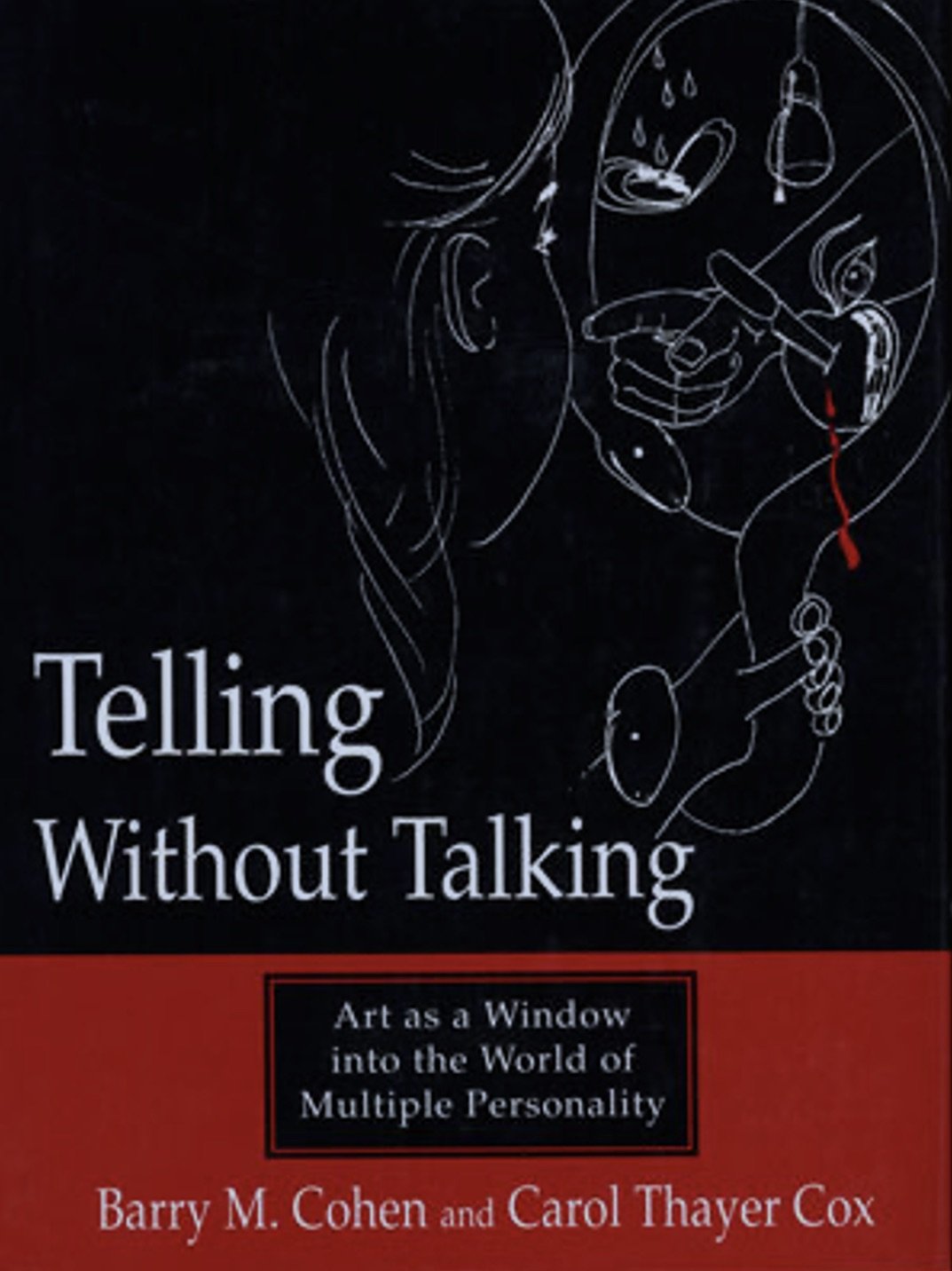People who have been abused as children often keep their memories locked in a strongbox of dissociation, hidden even from themselves. Since “Don’t tell!” is the pledge extracted from them in words and actions by their perpetrators, adults who have suffered significant trauma as children create art that externalizes unspoken rage and grief. Their highly personal inner worlds and the experiences from which these worlds developed are revealed and concealed in startling images.
This extensively illustrated book examines how creative expression can simultaneously disclose and camouflage information in artwork—especially information that is repressed and dissociated. Following the principles outlined here, readers can learn to recognize and decipher such graphic communications, characteristic of those with dissociative identity disorder (formerly called multiple personality disorder).
The authors, registered art therapists, begin with a concise examination of the essential ingredients of therapeutic artmaking, emphasizing the importance of visual literacy. They introduce their integrative method for helping viewers comprehend the many levels of meaning in these pictorial communications.
In addition, the authors delineate ten categories that typify the pictures made by people diagnosed with MPD. Approximately 180 drawings, paintings, and collages by more than two dozen adults diagnosed with dissociative identity disorder provide the reader with an unparalleled glimpse into an extraordinary realm. Step-by-step analyses of these pictures illuminate the authors’ approach, while giving the reader an opportunity to practice new skills.
These striking pictures serve as visual testaments to their makers’ intimate experiences. This groundbreaking approach—an effective blend of art therapy, psychology, and aesthetics—demonstrates the primacy of the image in communication, with considerable implications for diagnosis and treatment.
As expressive therapists, we are curious about artistic process. We wonder what makes a creative person translate ideas and feelings into this or that art form? Why a poem here, and a painting there? Why free verse rather than rhyme? Why abstraction rather than representation? What generates the spark leading to artistic composition, and does it differ for each artist? Does a picture speak a thousand words? Does a poem evoke a thousand pictures?
Could we create a book that would explore these issues? What makes a book visually dynamic and transformative? Images and words: these are the raw materials of communication. They are the natural tools for expressing our basic internal and interpersonal dialogue. In this regard, we are all artists and poets. Would there be enough interested artists and poets to contribute to such a venture?
We decided to advertise in a professional newsletter for poetry written by visual artists. The results were encouraging; the respondents were enthusiastic, and their submissions covered a broad range of perspective and style. We subjected the materials to blind review and selected those we considered appropriate. Our subsequent editing launched a reciprocally inspiring ten-year dialogue between us and the contributors.
Portrait of the Artist as Poet comprises the work of 30 trained visual artists who write poetry. Full-color representations of the artists’ paintings, collages, drawings, or sculpture are juxtaposed with their poetic compositions to provide an intimate glimpse of the aesthetic practitioner at work. Other books have combined the visual and word art of creative people. What makes Portrait unique is that it includes an essay by each contributor titled “Making Art/Making Poetry: The Variables of Process,” a prose reflection on his or her creative and therapeutic process.
It has fascinated us to learn how diverse are the variables of process for the artist/poets we have met as we engaged in this project. We marveled at the novel vision of the contributors evident in the juxtapositions of their art and poetry. Our work as editors has been a labor of love, fueled by our certainty that this book would have significance for personal inspiration and as affirmation of the value of creativity.
Coming from across the United States and Canada, the artists whose biographies and photographs accompany their work present North American culture from a variety of perspectives. This is an age of poetic revival. Readings and slams are crowded with people eager to learn more about the art and the artist often as a way of learning more about themselves.
Portrait of the Artist as Poet brings to life the extraordinary vision and voice of some of the people who use these ordinary forms to show and tell their lives, bringing into sharper focus our own. Portrait is a stylistically and intellectually appealing work that will inspire and inform all who are interested in the arts as a healing force. It will grace both the living room and the clinic, providing ample material for creative daydreaming as self-efficacy, and therapeutic modeling as process work for the professional creative arts practitioner or teacher. We invite readers of Portrait to connect with their own Muse. ~ from the Preface
Mother loss, no matter when it happens, is a pivotal event in a person’s life. How profound it is to lose the first person you have known in life, the person who has known you the longest and who holds memories of you from your very beginning. Whether her parenting was nurturing, mediocre, or damaging, you still experienced her as your mother. Biological or adoptive, regardless of what transpires, there is a bond between mother and child.
Saying Goodbye to Our Mothers for the Last Time includes 35 authors/contributors, both women and men, who write about the death of their mothers. The volume is rich in variety, from different locations to assorted cultures and ethnicities, from ways of dying to types of funerals, from methods of dealing with loss to strategies for self-care. Some of these stories are elegant in their simplicity, others intricate in their complexity. Some incite laughter and others elicit tears. Saying Goodbye tells people’s stories, and like fairy tales and myths, these stories offer readers an opportunity to relate to the characters and vicariously experience their trials and sorrows as well as their joys and celebrations. Stories help us tap into these archetypes of life and death that are part of us all.


